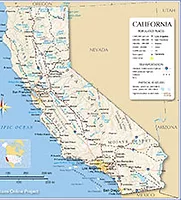The 2016 editions of the California Plumbing Code and California Mechanical Code went into effect on Jan. 1. Both the hardcopy and eBook versions, viewable on computers, tablets and smart phones, can be purchased and downloaded via the IAPMO web store at www.iapmo.org.
The 2016 editions of the CPC and CMC represent the most current approaches in the plumbing and mechanical fields. These codes are embedded with the 2015 editions of the Uniform Plumbing Code and Uniform Mechanical Code with the California amendments. They mark the fifth editions developed under the American National Standards Institute process. Contributions to the content of these codes were made by every segment of the built industry, including such diverse interests as consumers, enforcing authorities, installers/maintainers, labor, manufacturers, research/standards/ testing laboratories, special experts, and users.
The CPC is designed to provide consumers with safe and sanitary plumbing systems while, at the same time, allowing latitude for innovation and new technologies. Key changes to the 2016 CPC include:
- New product standards and flow rates for plumbing fixtures and fixture fittings. (Chapter 4).
- Lead-content provisions have been revised to address the minimum acceptable percentage lead
- content for pipes and fittings (Chapter 6).
- New provisions for residential fire sprinkler systems (Chapter 6).
- New requirements for the insulation of hot water piping (Chapter 6).
- New requirements for medical gas and vacuum systems based on NFPA 99 (Chapter 13).
- New testing and inspection provisions for nonpotable alternate water source systems (Chapter 15).
- New requirements for testing, inspection, and maintenance of nonpotable rainwater catchment
- systems (Chapter 16).
The CMC provides complete requirements for the installation and maintenance of heating, ventilating, cooling, and refrigeration systems, while at the same time allowing latitude for innovations and new technologies. Key changes to the 2016 CMC include:
- New general requirements for condensate wastes and control, installation of appliances on sloped roofs, and clearances to combustible constructions (Chapter 3).
- New ventilation provisions, such as the classification of recirculated and transferred air, parking garages exhaust, and natural ventilation (Chapter 4).
- New exhaust provisions for clothes dryers, Type I hoods and grease ducts, dishwashing machines, and downdraft appliances (Chapter 5).
- New duct system requirements for Factory-made air ducts, plastic ducts, and for ducts used in underground installations (Chapter 6).
- New appliance provisions, such as electric duct heaters, electric ranges, refrigeration appliances, and ductless mini-split systems (Chapter 9).
- New refrigeration system requirements, such as the refrigeration concentration limit, ventilation for refrigeration machinery rooms, pressure vessels, and pressure relief valve discharge (Chapter 11).
- New hydronic systems provisions (Chapter 12).





